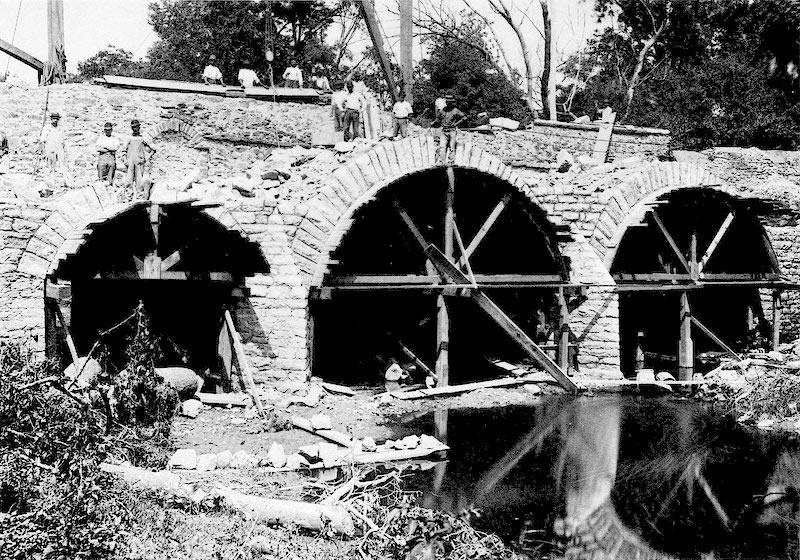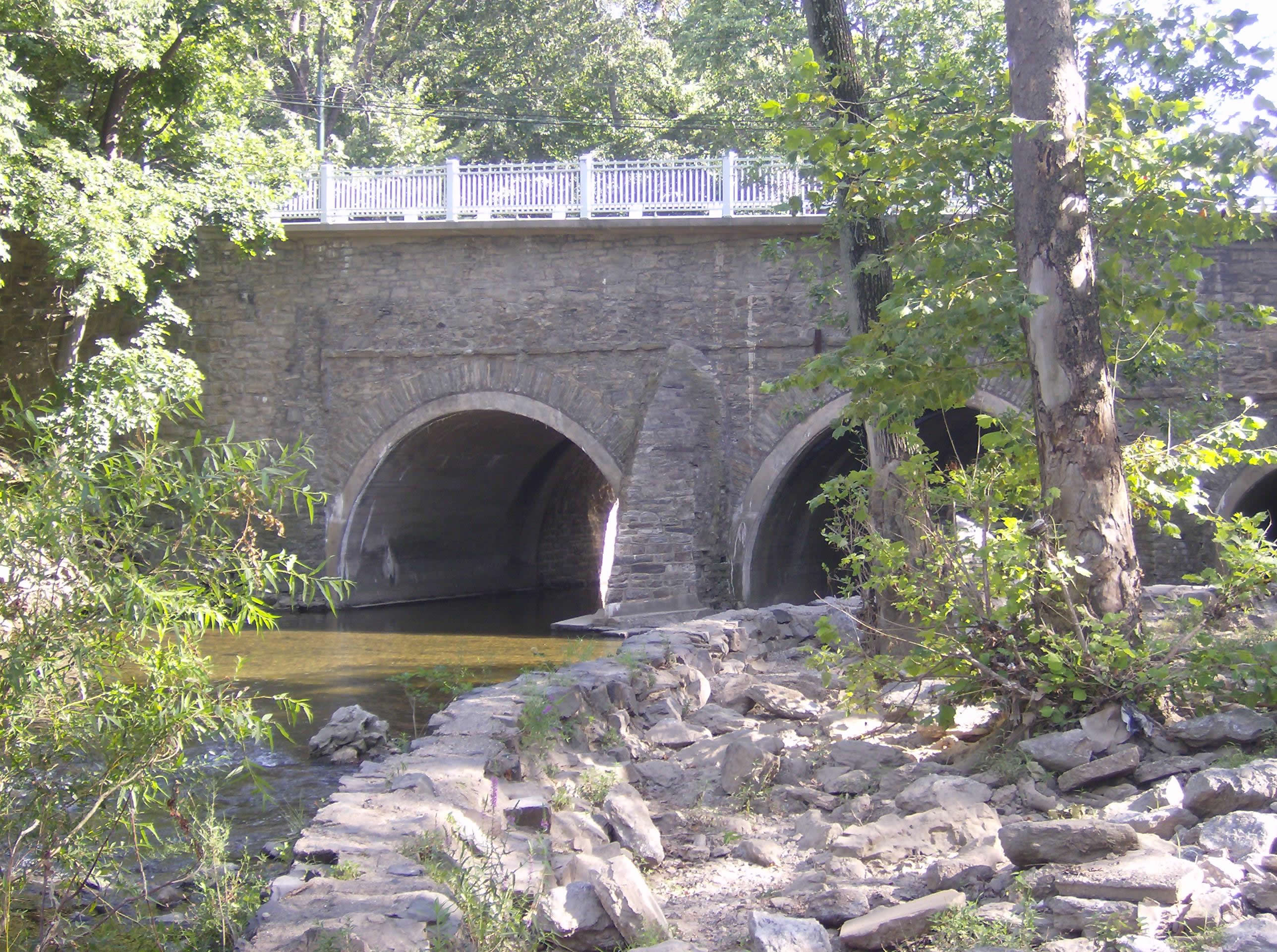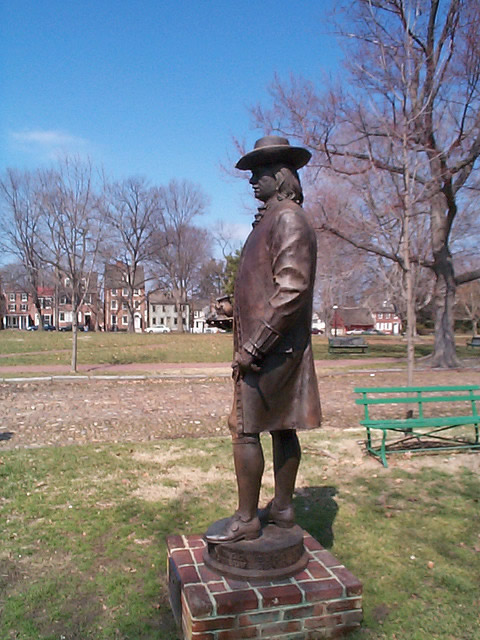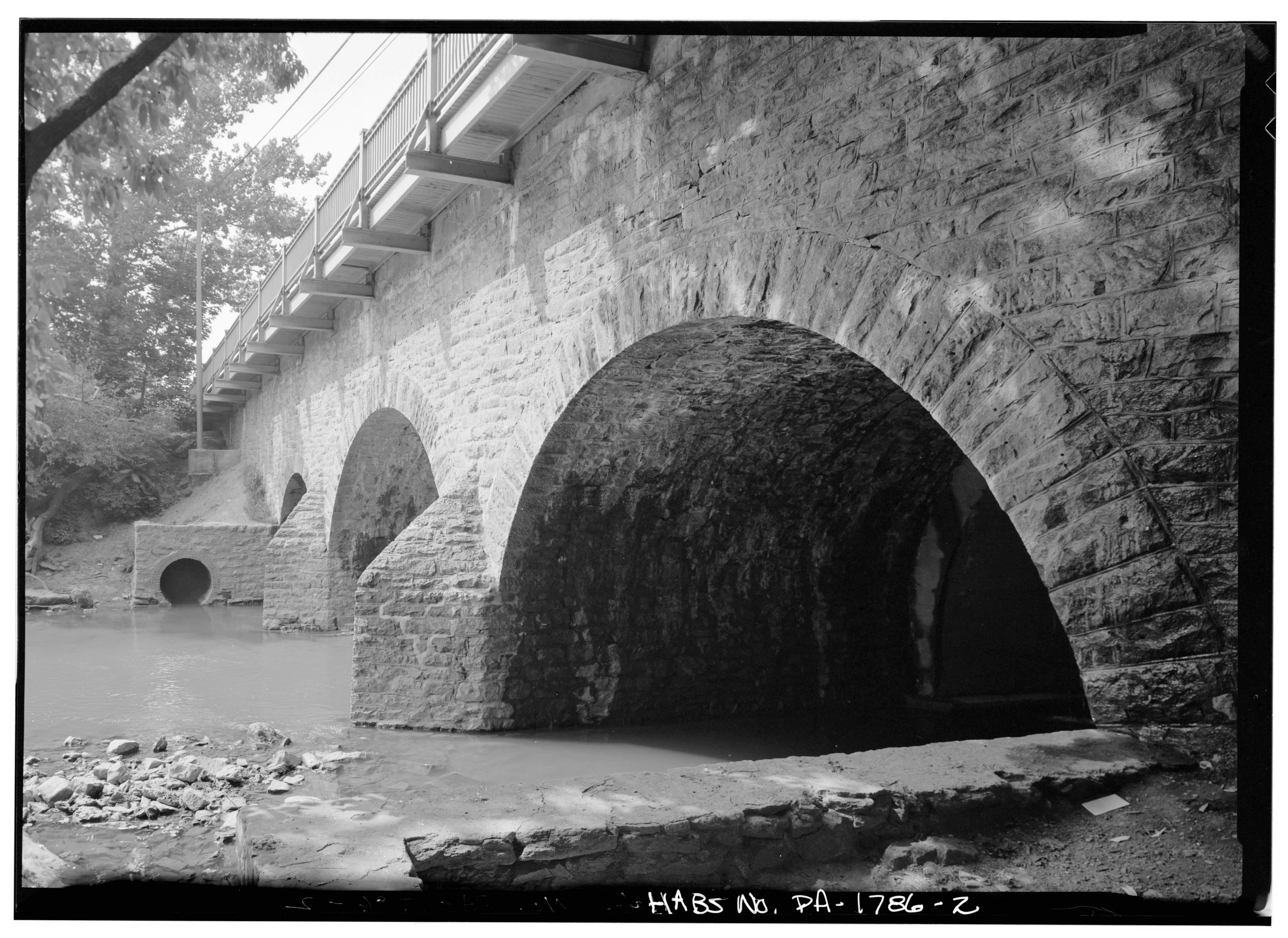For centuries, Pennypack Creek has run through southeastern Pennsylvania on its way to the Delaware River. Its name, derived from Lenape Indian, means “deep, dead water” or “water without much current.” The little creek may not seem terribly special, but in the neighborhood of Holmesburg in northeast Philadelphia its very presence is responsible for an amazing and humble piece of Pennsylvania history.
In Holmesburg’s Pennypack Park, Pennypack Creek is spanned by the Frankford Avenue Bridge. At 300 years old, the bridge is “the oldest stone arch bridge...still in service on a major travel route and most likely the oldest stone bridge anywhere in the country,” according to the American Society of Civil Engineers.
The bridge was built in 1697 by the men of Holmesburg as part of the King’s Highway. In the late 1600s, King Charles II of England ordered this highway to be built to provide better transportation between Philadelphia and major northern cities, specifically New York City. The General Assembly of Pennsylvania appointed the Governor and Provincial Council to carry out the orders and build the road. At the time, bridges had already been erected for travelers to pass over other rivers and creeks on the King’s Highway. But there was no bridge at Pennypack Creek, and travelers were forced to ford the river.
In 1683, William Penn appealed to the English Court at Upland, requesting that a bridge be built across Pennypack Creek. His request was granted, as were other requests for bridges along the King’s Highway. According to the Library of Congress:
“On March 10, 1683 a law was adopted by the General Assembly requiring the construction of bridges, within eighteen months, across all small creeks and rivers along the King’s Highway from the Falls of Delaware to the southernmost ports of Sussex County... They were to be erected by the inhabitants under the auspices of appointed ‘overseers’; those who fail to appear were to pay a fine of twenty shillings.”
The bridge was completed in 1697, but it was many years before it saw heavy traffic. Pennsylvanians and other travelers began to use the bridge more frequently in 1725. By the mid-1700s, the road from central Philadelphia to Frankford had become a major traffic route, and in 1740 the Frankford Avenue Bridge was widened to better accommodate the heavier amount of traffic.
The bridge played a part in transportation history in 1756, when the first stagecoach service from Philadelphia to New York was founded. The trip took three days, and Frankford Avenue and its bridge were part of the route. By 1783, that three-day trip had been cut down to one day, thanks to a faster coach called the Flying Machine.
In the late 1700s, the Frankford Avenue Bridge began to take part in major historical events. In August 1774, John Adams and the Continental Congress crossed the bridge on their way to Philadelphia. In April 1775, an express rider galloped across the bridge after a five-day journey to give news of the Battle of Lexington. In 1789, George Washington traveled over the bridge en route to the nation’s capital—then New York City—for his presidential inauguration.

When the Frankford Avenue Bridge was originally built, it was 73 feet long and 18 feet wide. Due to increases in traffic flow and changes in modes of transportation over the years, renovations became necessary to the bridge. In 1803, a tollbooth was added on the south end of the bridge to increase funds for the Frankford and Bristol Turnpike Company, resulting in 10% dividends for the company’s stockholders. In 1893, $15,000 was allotted for another renovation to widen the bridge and resurface Frankford Avenue. Finally, in 1950, the bridge was once again remodeled, this time to make way for trackless trolleys and modern cars. Today, the bridge is 154 feet and 5 inches long. The arches are 16 feet high and, according to the Library of Congress, are “supported by triangular shaped pier footings, or ‘noses’, on each side of central arch.”
Today, the Frankford Avenue Bridge is still used by travelers, as Frankford Avenue doubles as U.S. Route 13. It attracts a great deal of attention, and preservationist groups have sprung up to protect the bridge and the surrounding area. Friends of Pennypack Park is one such group, as it was created “to insure the protection of Pennypack Creek and the preservation of the surrounding land.” Friends of Pennypack Park even hosted a birthday party for the Frankford Avenue Bridge in 1997 to celebrate the bridge’s 300th year.
In addition to local recognition, the bridge has also attracted attention from national and international groups. In 1970, the American Society of Civil Engineers designated the Frankford Avenue Bridge as a National Civil Engineering Landmark and awarded it a plaque for its service. In 1988, the bridge landed a spot on the National Register of Historical Places. The bridge was even featured in a Japanese documentary entitled “Bridges of the World,” which was filmed by Japan’s NBC-subsidiary station in 1996.
The Frankford Avenue Bridge has been hailed as a “civil engineering masterpiece.” After standing strong and steady for the past 300 years, it is a title the structure clearly deserves. Gerald McKelvey of The Philadelphia Inquirer says that “the men built well. The bridge has been widened and reinforced, but the stone arches still stand--while 60 other vehicular bridges in the city, most built much later, have been closed after weakening.” Even after 300 years, the bridge continues to serve a great amount of traffic, though these days there are far more cars than horses and carts.
The bridge is more than three stone arches spanning a creek. As William Penn’s descendant said at the bridge’s 300th birthday celebration, “...a bridge is not just stone and mortar...it is a passageway by which people connect.”
The Center would like thank Fred Moore of the Northeast Philadelphia History Network for his assistance with this story.
Sources:
- American Society of Civil Engineers. “Frankford Avenue Bridge.” History and Heritage of Civil Engineering. ASCE, 2010. 10 Oct. 2010 <http://live.asce.org/hh/index.mxml?versionChecked=true>.
- Cantor, Harvey, comp. “Bridge Committee Chairman’s Review; Bridging the Past to the Future.” Friends of Pennypack Park. N.p., 28 Sep. 2010. 11 Oct. 2010 <http://www.balford.com/fopp/fophist4.html>.
- Federal Writers Project Works Progress Administration. Philadelphia: A Guide to the Nation’s Birthplace. William Penn Association of Philadelphia. Harrisburg, PA: Pennsylvania Historical Commission, 1937. American Guide Series.
- Historical Society of Frankford. “History.” The Center for Northeast Philadelphia History. N.p., 2010. 11 Oct. 2010 <http://www.frankfordhistoricalsociety.org/history.html>.
- McKelvey, Gerald. “Pennypack Bridge Honored As Engineering Masterpiece.” The Philadelphia Inquirer. 16 Sep. 1970: 44.
- “Pennypack Creek Watershed History.” Philadelphia Water Department: Office of Watersheds. 2010. Philadelphia Water Department. 18 May 2011 <http://www.phillywatersheds.org/your_watershed/pennypack/history>.
- The Library of Congress, comp. “Pennypack Creek Bridge.” Historic American Buildings Survey/Historic American Engineering Record. American Memory, n.d. 10 Oct. 2010 <http://www.loc.gov>.



